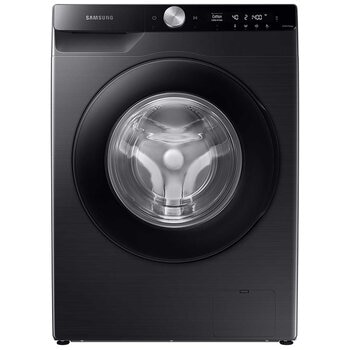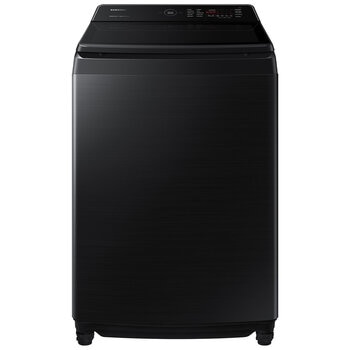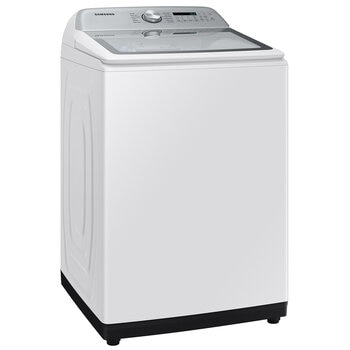How to choose laundry appliances
When choosing a washer or dryer, the first thing you should consider is the actual space you have at home versus the size of your family and the amount of washing you are going to do. After you have determined how much capacity you will need, it’s time to figure out the configuration — should you get a washer dryer combo, a stand alone washing machine or both washer and dryer separately? Think about what your necessities are and what is practical for your lifestyle and your home. Once priorities are set, you can begin to understand more about efficiency, features and technology on laundry appliances.
Why Buy Appliances at Costco?
Included in our price
*On selected appliances. Delivery excludes some areas.
Shop Washers & Dryers by Popular Brands
Energy efficiency
Laundry appliances can be one of the most expensive to run in a household. Because they are usually a long term purchase with 10+ years of use, understanding energy ratings overall efficiency is crucial when it comes to saving on your energy bill.
Look for an energy rating label to find how many kilowatt hours (kWh/per year) it needs to run. To calculate your machine’s annual spending, multiply your electricity rate by the appliance’s kWh. Generally speaking, the more stars, the most energy efficient. Although that is a very good indicator, remember that other factors can also influence consumption and performance, such as temperature settings and the size of the load.
Water efficiency
When it comes to water efficiency and washing machines, you can think beyond looking at the water rating label. Even the type of washer can help you save water — the front load model being the most economical and eco friendly. They can use up to 70% less water compared to a top load of the same capacity. The downside, however, is they need to run for longer, which can impact cycle length.
Some washing machines now come with a set of preset cycle programs including eco wash, designed for a light wash using minimum water and energy. Consider all of those things before making your purchase.
Size and capacity
The first thing to note when buying laundry appliances is the capacity, which refers to the amount of clothing the machine can wash or dry in one load. The capacity is specified in kilograms, ranging from 5kg all the way up to 14kg. A washing machine’s capacity is measured by weighing dry laundry, while with dryers damp laundry is measured instead. That total capacity, however, is mostly an indicator, but that does not mean you will be able to run a full load every time. For instance, depending on the program selected, you might have to wash/dry a limited load size.
| Washer Capacity | Dryer Capacity | T-shirts | Size | Suits |
|---|---|---|---|---|
| 5-6 kg | Up to 4.5 kg | Up to 30 | Small | 1-2 people |
| 7-8 kg | 5.5 kg | 35-40 | Medium | 1-3 people |
| 9-10 kg | 6.5-8 kg | Up to 50 | Large | 3-4 people |
| 10+ kg | 8+ kg | 50+ | Extra large | 4+ people |
Laundry layout
When building a laundry room, consider your space to determine the ideal configuration for a washer and dryer. Ideally, the room should be functional while leaving enough storage area for clothes, laundry products and other equipment such as iron, steamer or ironing board. In some cases, such as smaller apartments, the laundry area is shared with either the kitchen or bathroom, which makes it all the more important to plan out the space for maximum efficiency. Layout options include the washing machine and dryer side by side, stacked vertically or an actual washer dryer combo, or “all in one”. Be mindful of other dimensions: a front load machine will need clearance space in order to open the door safely.
Side by side
This typical layout is found in most households, and it’s clear why. It’s both convenient and easy maintenance, as well as being accessible in case of physical limitations or use of wheelchair. With this configuration you can easily install a counter area on top of the washer and dryer, using it as a folding and ironing station. Cabinets above are also a great option for storage, while still keeping things tidy.
Another possibility is placing pedestals under the appliances for height adjustment. Many pedestals come with built in drawers, making it a convenient spot to store laundry detergent, softener, etc. The downside of a side by side layout is that it requires a lot more floor space, which can be tricky for smaller apartments or shared laundry spaces. Retailers recommend having a room with over 1.40 metres wide for the set.
Stacked
This space saving solution is very popular for families who have a smaller laundry room. That way you take up less floor space while optimising vertical area. A stacked layout allows you to hide the set with cabinets for a seamless look. Consider your height and whether the top appliance will be hard to reach. To find whether a machine is stackable, check measurements and instructions from manufacturer. Remember to always stack the smaller appliance on the top!
With this configuration, it is recommended to use a rubber mat or a stacking kit between the two appliances for safety. Stacking kits are designed to distribute the weight evenly and to absorb vibrations, usually compatible with selected washer and dryer models from a specific brand. Some brands even offer the option of a preset wash tower. Matching washer and dryer enables you to stack them in a single tower using smart technology, so you can control both appliances on a central panel.
All in one
A compact washer dryer combo is ideal for tiny living spaces, allowing you to have both capabilities of a a front load washing machine and a condenser clothes dryer in one laundry appliance. This means you can save space while also saving the money spent on a second appliance.
In many ways this machine is also easier to manage, as you don’t have to transfer the load from washer to dryer. Some models even give you the option of washing and drying all in one cycle, so you can just leave it to work and pick up the clothes once they’re ready to be put away. The main advantages of a washer dryer combo are energy and water efficiency, as it’s a front load machine.
Installing a washer or dryer
Once you finally decided on a laundry configuration, it’s important to keep in mind how the installation process works for a new washer and dryer. Depending on the kind of machine you have, there are some requirements for installation that might call for professional assistance, such as a fixing up a gas flex line or plumbing services including water connections and draining. Make sure to also check that those connections will reach the appliance with ease to avoid potential hazard and wear and tear and, if needed, get an extension hose.
Other preparations include measuring surrounding areas, doorways, hallways and elevators or stairways to make sure the washer/dryer will fit and to prevent any damage during moving. If you have an old machine that you are disposing of, make sure to safely turn off any connections to water or gas lines, clean filters and supply lines to dispose of any water and unplug from the wall. With electrical dryers, the vent should be cleaned beforehand to get rid of any build up and debris. When it’s finally time to install the new appliance, dispose of any packaging before moving it into the designated laundry area, as this will facilitate the process. In case you are unsure on how to proceed, check the instructions manual from manufacturer for help.
Washing machines
Top load with agitator
Top load agitator washing machines, a staple in many households, operate on a simple yet effective setting. Upon starting a cycle, waters fills the tub while the agitator, a central pillar located in the middle, rotates. This motion creates a swirling action, breaking up dirt and stains and allowing thorough cleaning.
The main benefit of a top load with agitator is affordability, as this is a budget friendly option to many users. They are also easy to operate and maintain, thanks to its straight forward design. The most notable disadvantage is the high water and energy consumption compared to front load. Additionally, the agitator can be rough on delicates, and potentially cause more wear and tear on fabrics over time.
Top load with impeller
Newer top load washing machines use an impeller or pulsator, which functions in a similar way to an agitator. The impeller can be described as cone, wheel, fin or disc that rotates back and forth, gently rubbing clothes against each other.
As it has a low profile compared to agitator machines, that means you are able to fit more into each load, including bulky items such as duvet covers and quilts. They also require less water, are gentler and clothes tend to tangle less than with agitators. On the cheaper side, impeller washing machines can, however, have longer cycle times, and when compared to front load washers, are not as energy and water efficient.
Front load
Overall, front load washing machines are the most water and energy efficient. That can vary with different machine programs and whether you tend to run heavy duty cycles frequently. While they tend to cost more upfront compared to top load washers, a front load model is an investment that will generate savings in the long run.
Front load machines tend to run smaller, fitting into tiny and crammed spaces easily. They can be gentle on your clothes while still not compromising on efficiency. This model tends to have higher spin speeds as well, which means clothes will come out less damp and soaked, saving time and money on the drying process. This kind of machine will use less detergent as it is water efficient.










